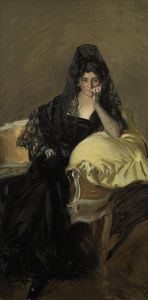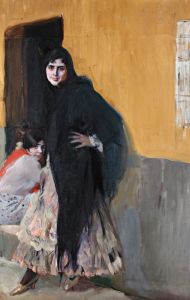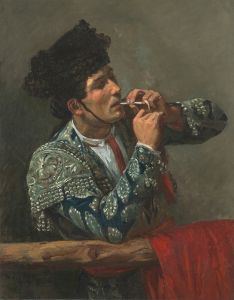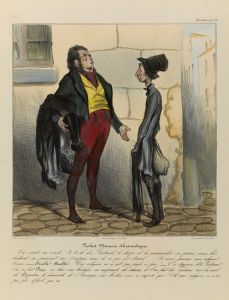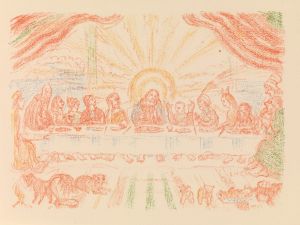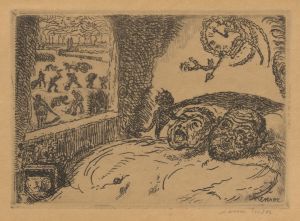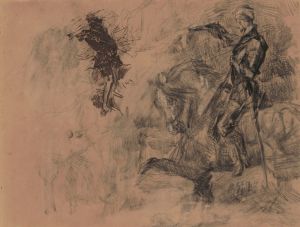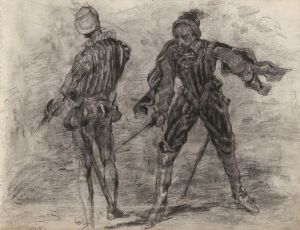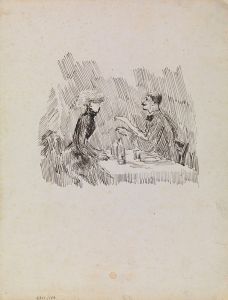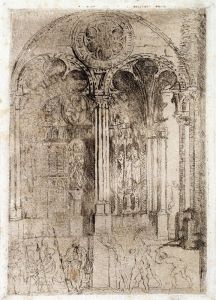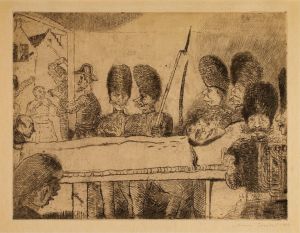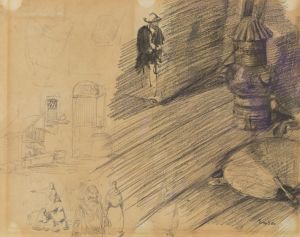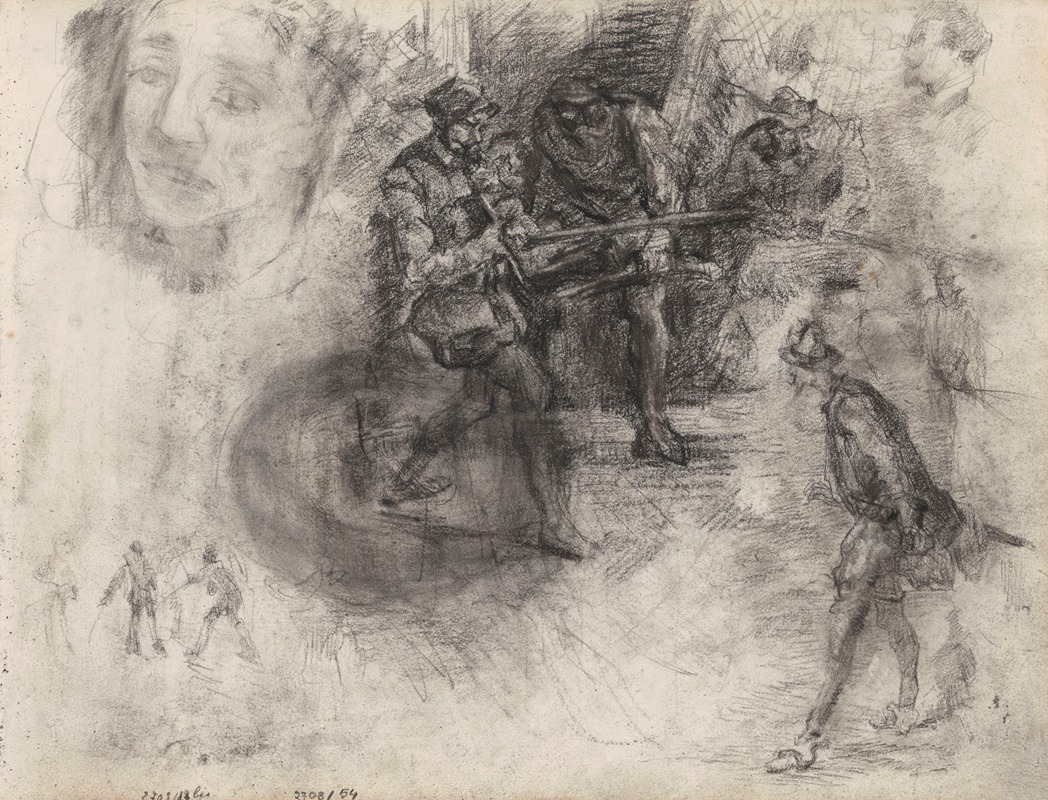
Don Quixote
A hand-painted replica of James Ensor’s masterpiece Don Quixote, meticulously crafted by professional artists to capture the true essence of the original. Each piece is created with museum-quality canvas and rare mineral pigments, carefully painted by experienced artists with delicate brushstrokes and rich, layered colors to perfectly recreate the texture of the original artwork. Unlike machine-printed reproductions, this hand-painted version brings the painting to life, infused with the artist’s emotions and skill in every stroke. Whether for personal collection or home decoration, it instantly elevates the artistic atmosphere of any space.
James Ensor, a prominent Belgian painter and printmaker, is known for his unique and often surreal style that combines elements of satire, fantasy, and the grotesque. Among his diverse body of work, Ensor created a painting titled "Don Quixote," which reflects his fascination with the famous literary character from Miguel de Cervantes' novel "Don Quixote."
Ensor was born in 1860 in Ostend, Belgium, and spent most of his life there. He was a leading figure in the Belgian avant-garde movement and was associated with the group Les XX, which included other notable artists such as Théo van Rysselberghe and Fernand Khnopff. Ensor's work is characterized by its bold use of color, intricate detail, and a penchant for depicting fantastical and often macabre scenes.
The painting "Don Quixote" by James Ensor is an interpretation of the iconic character from Cervantes' early 17th-century novel. Don Quixote, a nobleman who becomes a self-declared knight-errant, is known for his idealistic and often misguided adventures. The novel is a seminal work in Western literature and has inspired countless adaptations and interpretations across various art forms.
Ensor's depiction of Don Quixote is consistent with his artistic style, which often includes elements of satire and social commentary. While specific details about the painting's composition and style are limited, it is likely that Ensor's version of Don Quixote would incorporate his signature use of vivid colors and expressive forms. Ensor was known for his ability to blend reality with fantasy, and his portrayal of Don Quixote may reflect this tendency, capturing the character's delusional yet noble quest.
Throughout his career, Ensor was fascinated by themes of masks, skeletons, and carnivals, often using these motifs to critique society and explore the human condition. It is possible that his "Don Quixote" painting includes similar elements, using the character's story as a vehicle to explore deeper philosophical or societal issues.
Ensor's work, including his interpretation of Don Quixote, has been influential in the development of modern art. His innovative approach to color and form, as well as his willingness to tackle complex and often controversial subjects, has earned him a lasting place in art history. Ensor's paintings can be found in major museums and collections worldwide, and his legacy continues to inspire contemporary artists.
In summary, while specific details about James Ensor's "Don Quixote" painting are scarce, it is a testament to his unique artistic vision and his ability to reinterpret classic literary themes through his distinctive lens. Ensor's work remains a significant contribution to the world of art, celebrated for its originality and depth.





